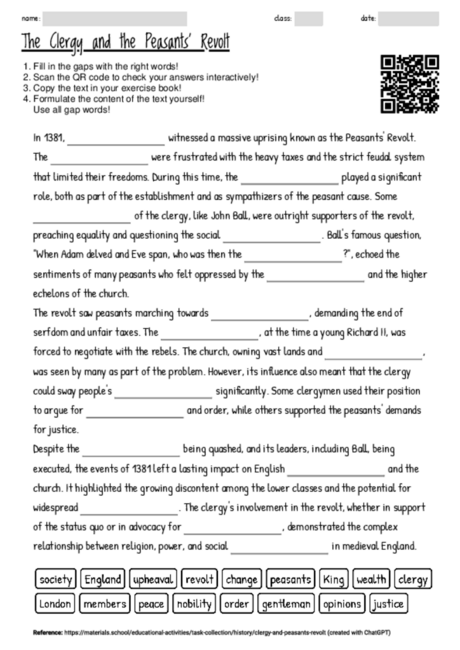The Clergy and the Peasants' Revolt
Cloze texts offer a dynamic way to engage students with historical content, enhancing their comprehension and retention. This particular cloze text on the Peasants' Revolt and the clergy's role within it is a versatile tool that can be used in various teaching phases. During the introduction of new material, it encourages active engagement as students fill in the blanks, prompting them to connect with prior knowledge or hypotheses about medieval society, religion, and power dynamics. It's especially beneficial for highlighting the interconnectedness of social classes, the church, and governance during a pivotal moment in English history. In review sessions, the cloze text serves as a refresher, helping students to consolidate their understanding by recalling key terms and concepts. The choice of keywords stimulates critical thinking, as students must understand the context and significance of each blank to select the appropriate term. This activity can foster discussions about the motivations and perspectives of different social groups, including the clergy's varied responses to the peasants' demands. The inclusion of John Ball as a sympathetic clergy figure offers a nuanced view of the era, challenging students to consider the complexity of historical narratives. Overall, this cloze text not only aids in memorizing facts but also in developing a deeper understanding of the causes and consequences of the Peasants' Revolt, illustrating the power of language in shaping historical consciousness.

